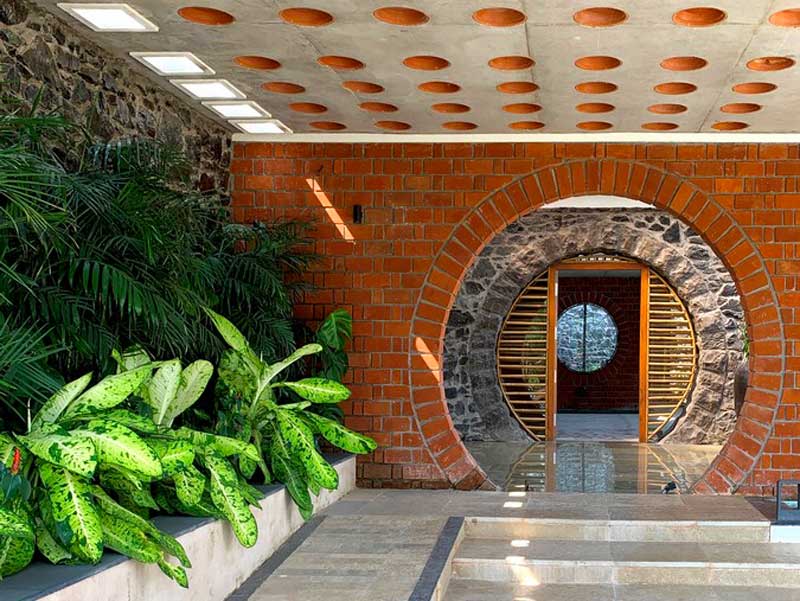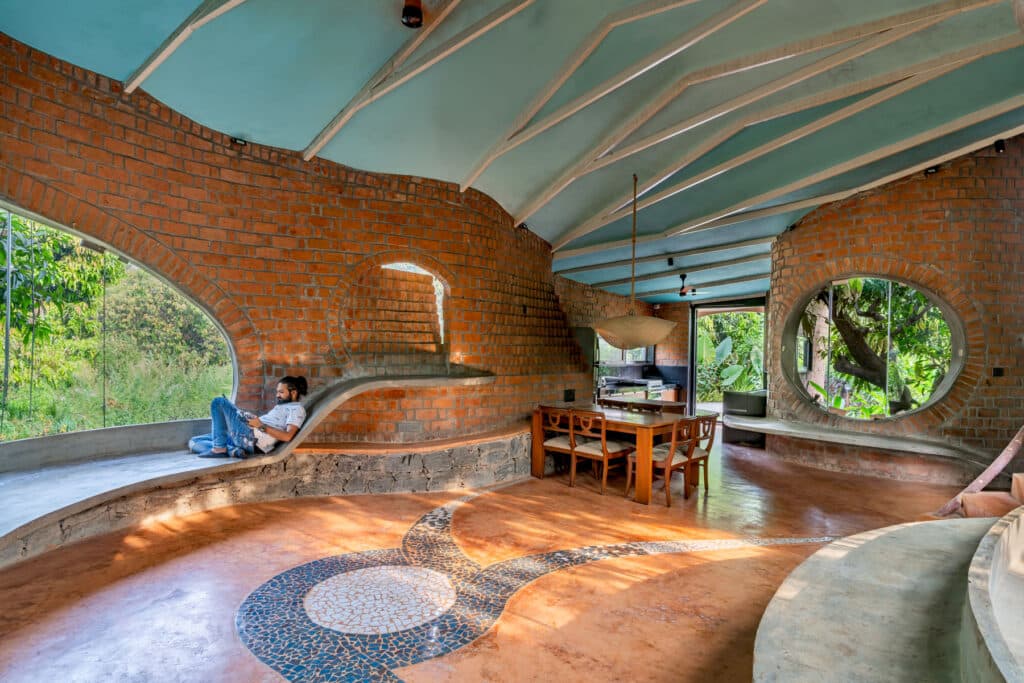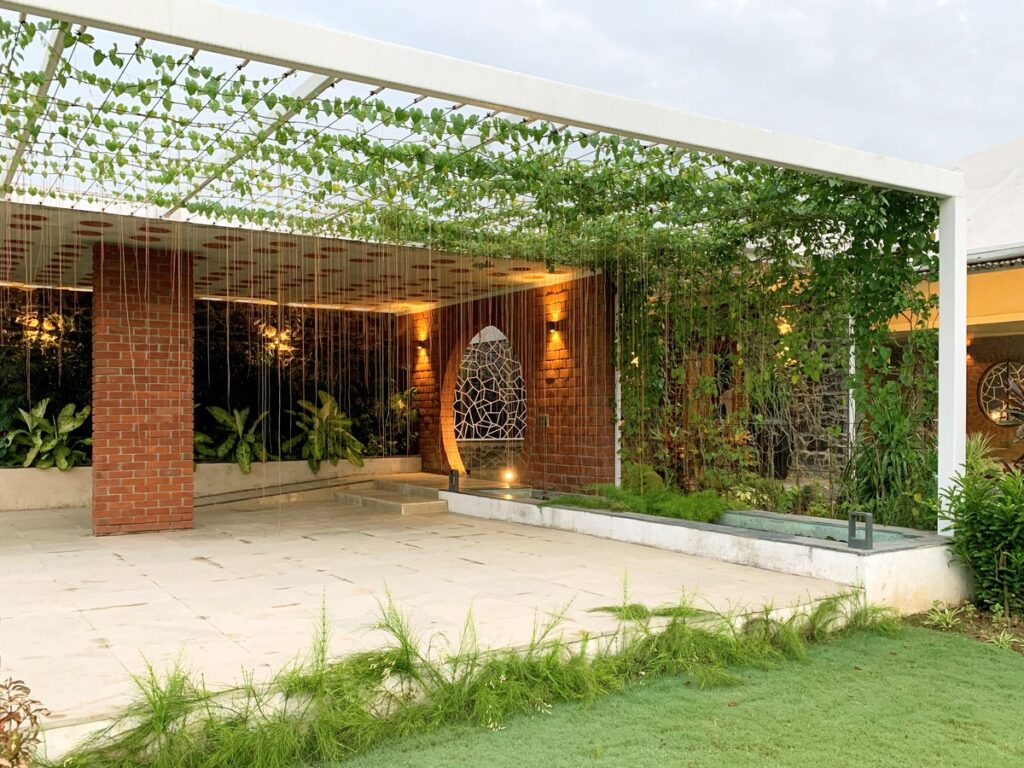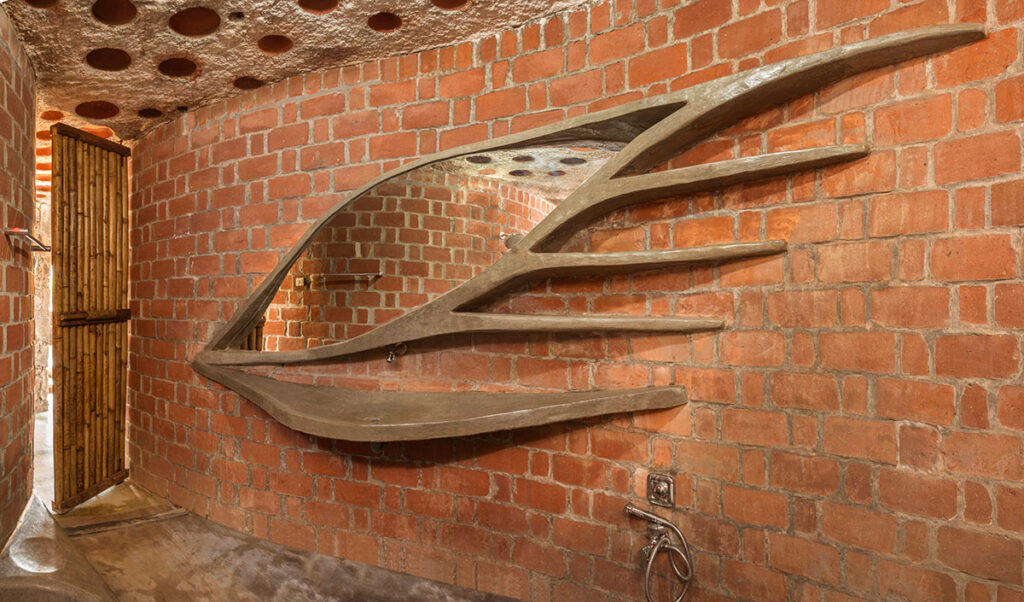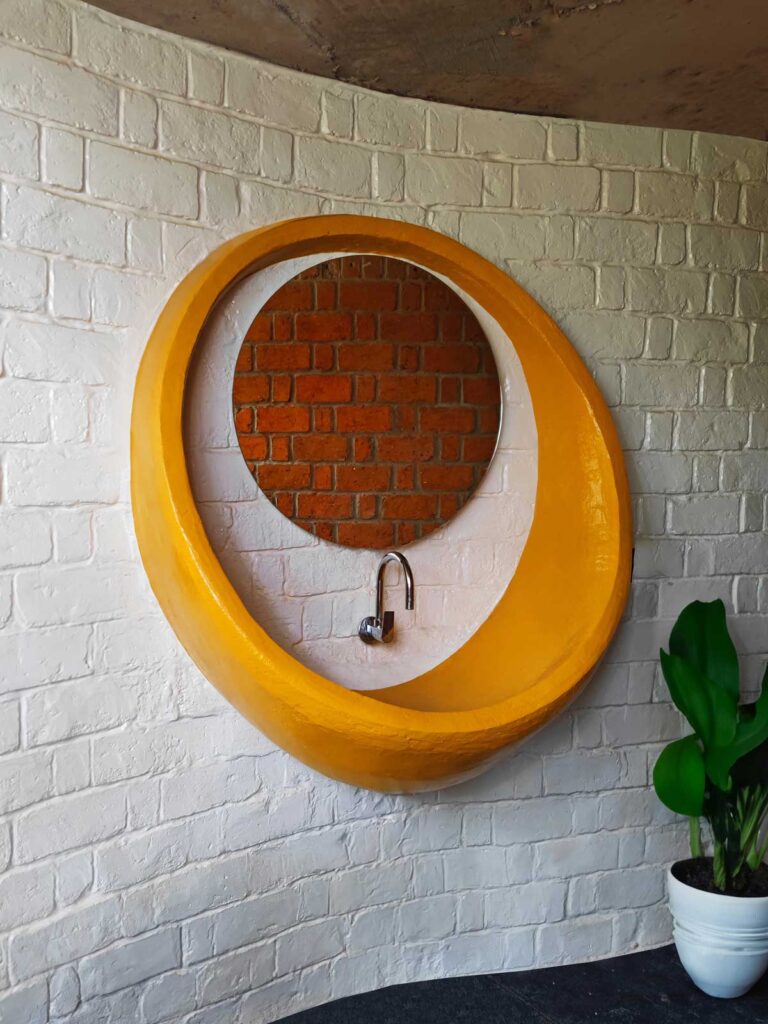All vertical and horizontal reinforced bands, lintels (for standard-sized openings), and electrical conduits are concealed within the wall, enhancing the aesthetic appeal by eliminating the need for plastering and allowing for an elegant exposed brickwork finish.
Rat trap bond
Table of contents
What is rat trap bond
Rat trap bond is an innovative brick masonry technique in which bricks are placed on edge (vertically), creating a cavity within the wall. This design reduces the number of bricks and mortar used, enhances thermal insulation, and lowers overall construction cost. Originally popularized by architect Laurie Baker, this method is widely adopted in sustainable construction across India.
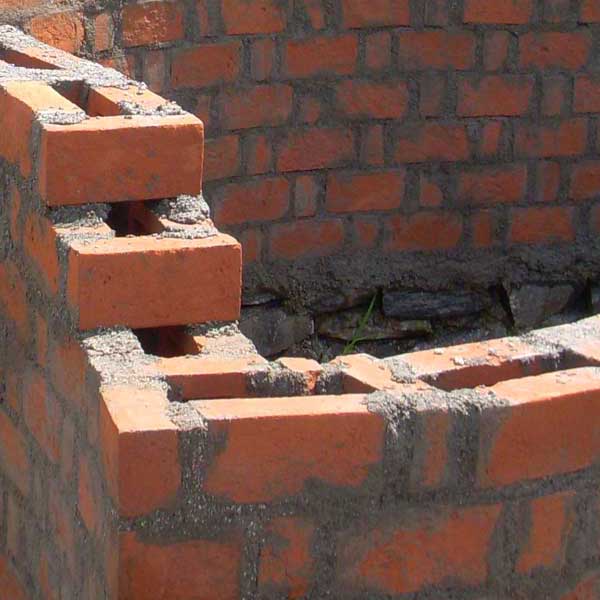
Constructing brick wall using rat trap bond

The bricks are placed in vertical position, so that 110 mm face is seen from front elevation, instead of the 75mm face (considering brick of standard size 230 X 110 X 75 mm). Since width of wall remains 230mm, an internal cavity is created. This is where approximately 30% Material (brick and mortar) is saved and thus overall construction cost is reduced. Cavity provides effective thermal and sound insulation. This makes rat trap bond energy and cost efficient building technology.

Advantages of using rat trap bond
1. Cost-Effective Construction
Since rat trap bond uses fewer bricks and less mortar than traditional masonry, it leads to significant cost savings. This makes it a preferred choice for budget-conscious projects without compromising on quality or strength.
2. Enhanced Thermal Insulation
The air gaps created within the wall act as natural insulators, helping regulate indoor temperatures. This reduces the reliance on artificial cooling and heating systems, making rat trap bond brickwork highly energy-efficient.
3. Environmentally Friendly
By minimizing the use of materials and improving energy efficiency, rat trap bond brickwork significantly lowers the environmental impact of construction. This technique aligns perfectly with green building practices and sustainable architecture.
4. Aesthetic Appeal
5. Structural Strength
Despite using fewer materials, rat trap bond walls offer excellent load-bearing capacity. When executed correctly by skilled masons, they provide durable and long-lasting structures.

Things to consider while using rat trap bond
- Bricks should be of good quality with consistent size and straight edges First layer (bottom) and last layer (top) of the wall should be solid (without cavity).
- Layer at sill and lintel levels of opening and sides of opening should be solid (without cavity) for fixing frames.
- Reinforcement bars can be put in vertical cavities at corners and around openings to improve earthquake resistance. Reinforcement bars can be put in horizontally to make lintels and to improve earthquake resistance.
- Electrical conduits and plumbing pipes, with prior planning, can be put inside cavity for better aesthetics.
Comparison: Traditional Brick Bond vs Rat Trap Bond
Feature | Traditional brick bond | Rat trap bond |
|---|---|---|
Brick Usage | Full bricks | 25% less |
Thermal Insulation | Lower | Higher |
Construction Cost | Higher | Lower |
Load Bearing Strength | High | High (with care) |
Skill Requirement | Low | Moderate |
Rat Trap Bond Video: A Simple Visual Guide
This short video offers a clear and concise introduction to the rat trap bond technique — an innovative and sustainable method of brick masonry. Learn how vertically laid bricks create cavities that enhance insulation and reduce material use. Perfect for students, professionals, or anyone curious about eco-friendly construction, this visual guide helps you understand the core principles behind rat trap bond walls.
Frequently Asked Questions
Q: Why is rat trap bond more sustainable?
A: It reduces the number of bricks and mortar used while improving thermal insulation, which lowers energy demand for cooling.
Q: Is rat trap bond suitable for multi-story buildings?
A: It can be used up to 2–3 stories, provided it’s structurally designed and executed by trained masons.
Q: Who invented rat trap bond masonry?
A: It was popularized in India by architect Laurie Baker, known for cost-effective, sustainable architecture.
Our Projects Built Using Rat Trap Bond Masonry
At Blurring Boundaries, we’ve employed rat trap bond masonry in multiple residential and institutional projects near Mumbai. We found that this method helped reduce brick usage by 25–30% and improved internal wall temperatures by 3–4°C during peak summer.
Our masons initially needed training to master the alignment, but the long-term benefits in terms of material savings, thermal comfort, and aesthetic expression made it worthwhile.
Check out another cost effective, eco-friendly construction technology introduced by same legendary architect Laurie Baker – filler slab.

